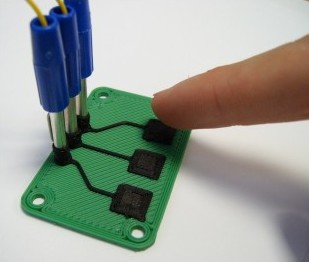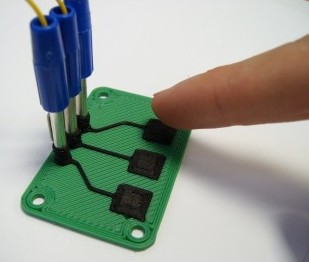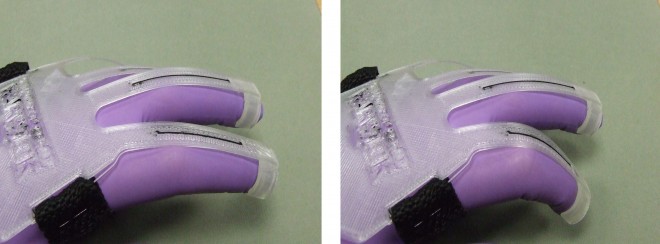


Researchers at the University of Warwick have produced a 3D printable conductive plastic. The Carbomorph plastic is compatible with the printer heads used in off the shelf 3D printers. If you own a 3d printer like the MakerBot Replicator you can now print conductive circuits into your bespoke objects.
You could now festoon any number of the objects from the Pirate Bay with LEDs if you like! But the potential uses which Warwick spotlights are more exciting than that. Tipping their hat to Makey Makey they printed a plastic gamepad with functioning buttons. The ghosts of gaming past were also illustrated in a 3D printed “power glove” where the carbomorph acted as a flex sensor: the finger motions of a user could be measured by anyone with cursory Arduino knowledge.
It's a sign of the times that Dr Simon Leigh and his colleagues set out to research an application that was as easy to implment as possible – they wanted this research to be taken up by the makers, designers, tweakers and hackers of the world. This is significant, for even as we wait for 3D printing to break the mainstream we have to concede that the open source maker community continues to set the agenda for the technology. If you'd like to get started printing conductive plastic takes only 8 steps, and you can find all the details here.



